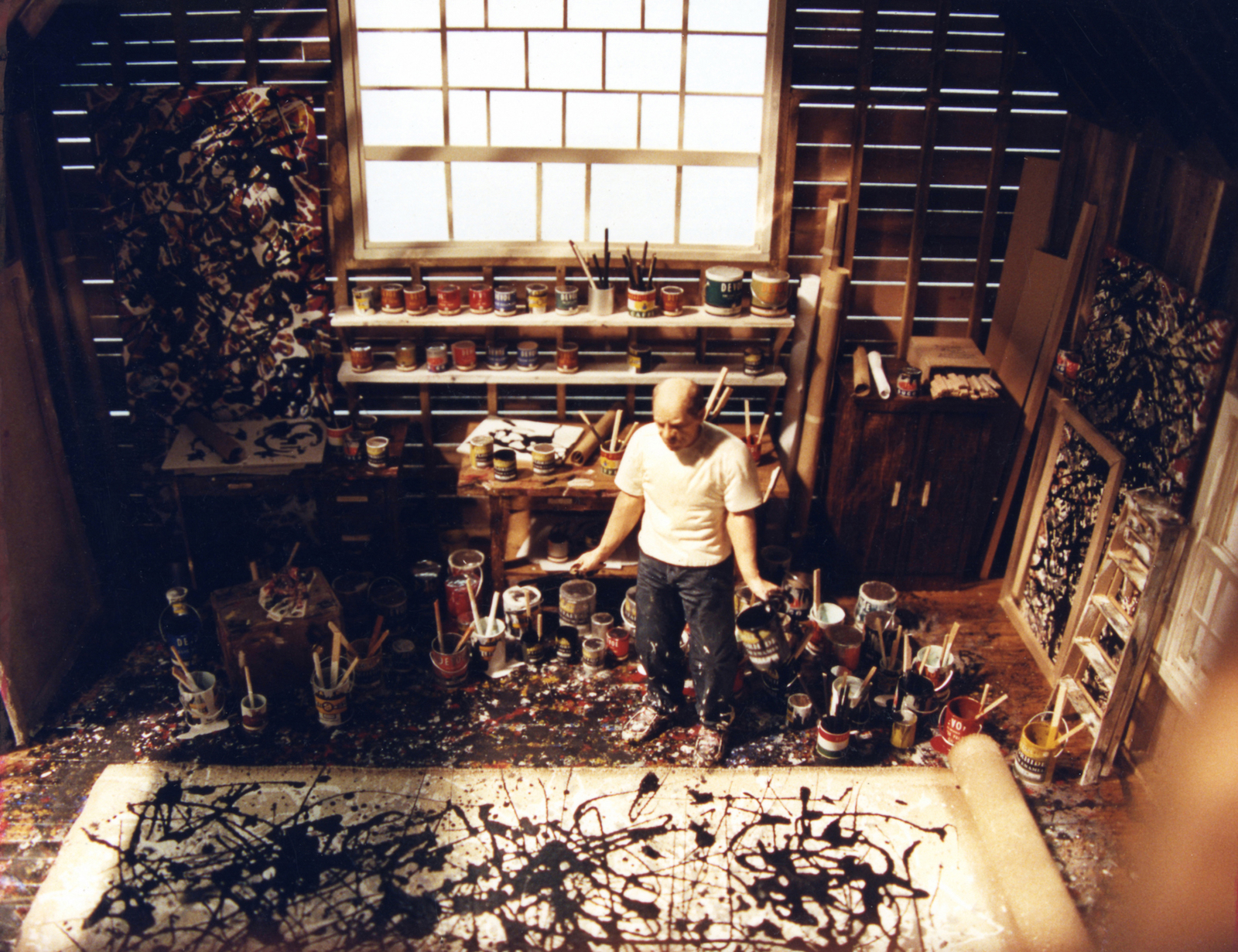Our Amazing History: Jackson Pollock

Painter Jackson Pollock spent the last 10 years of his life in the Hamptons. He took inspiration from this place, did what is considered his best work here and died in a wild car accident on Springs-Fireplace Road near his house at the age of 44. At the time of his death, he was viewed as one of the greatest painters of the abstract expressionist movement.
Pollock was born in 1912 in the small town of Cody, Wyoming. As a young man, he moved to Greenwich Village, set up a studio, and joined with others creating abstract expressionist paintings that showcased art in its purest form. Soon the abstract-expressionist movement caused the center of the art world to shift from Paris to Manhattan.
Art gallery owner Peggy Guggenheim recognized Pollock as a genius, an unstoppable force and a heavy drinker, very difficult when drunk. After he peed in the fireplace among Guggenheim’s friends during a party, she decided to offer him an arrangement. She lent him the $2,000 down payment on a house that backed onto the shores of Accabonac Harbor in Springs, East Hampton so he could develop his talent in this quiet setting along with his wife Lee Krasner, a painter in her own right. In exchange, for two years Pollock would gift Guggenheim the paintings that resulted.
Thus, in 1945 at the age of 33, Pollock was moved out of the city into a house on Springs-Fireplace Road that is blessed with an extraordinary soft light reminiscent of the light in the south of France.
Pollock thrived here. His wife cooked and cleaned and painted in a bedroom upstairs. He painted in a studio and sometimes outdoors between the house and the harbor by climbing a ladder and dropping paint onto a giant canvas on the ground wherever his imagination instructed. His work was accompanied by jazz records played at high volume on a Victrola record player and sound system set up in the living room.
He bought an old car, swapped a small painting for groceries at the Miller General Store, and when his paintings were met with astonishment by critics, dozens of other abstract expressionists followed his lead by moving out to Springs.
In 1949, America’s best selling magazine, Life, featured a photo of Pollock on its cover asking if he was the greatest living painter in the United States. In 1956, Time magazine dubbed Pollock “Jack the Dripper” due to his painting style.
Pollock’s drinking caught up with him in the early 1950s. His marriage was near to breaking up. His work seemed less inspired. And in August of 1956 his wife went off to France for a vacation by herself.
As a result, Pollock invited a 20-something girlfriend out for the weekend, and she invited another woman friend to join them. Pollock met them at the East Hampton Long Island Rail Road station in his new Oldsmobile 88 convertible and, the next evening, drunk, got persuaded by the two girls to take them to a party at the home of artist Alfonso Ossorio, (now Ron Perelman’s estate). Pollock declined, then got talked into it and then, halfway there, became angry, turned the car around, and stepped on the accelerator. The girls, Ruth Kligman and her friend Edith Metzger, begged him to stop, but he drove off Springs-Fireplace Road into some woods, hit a tree which flipped the car and killed him and Metzger. His wife came home to this tragedy and Kligman subsequently wrote a book about how in love she was with him.



